A DIC-Based Study on Fatigue Damage Evolution in Pre-Corroded Aluminum Alloy 2024-T4
Abstract
:1. Introduction
2. Experiment
2.1. Material and Specimen
2.2. Test System and Experimental Procedure
3. Results
3.1. Fatigue Lives
3.2. Fatigue Damage Accumulation
3.3. Crack Initiation and Propagation by 3D-DIC
3.4. Fracture Morphology Analysis
3.5. Effect of Localized Corrosion on Damage and Cracking
4. Modelling
4.1. Simplified Corrosion-Originated Crack Model
4.2. Fatigue Crack Growth Analysis
5. Conclusions
- (1)
- The combined analysis of fatigue tests, DIC and SEM is effective to characterize damage evolution and crack propagation in pre-corroded aluminum alloy under fatigue loading conditions.
- (2)
- The fatigue life of test specimens reduced by about 47% and 68% after prior corrosion exposure of 48 h and 96 h, respectively. A nonlinear damage accumulation model was calibrated and used to describe the fatigue damage evolution. It was shown that prior corrosion led to the accelerated damage accumulation with increasing corrosion time.
- (3)
- The DIC results showed that cracks always appeared at the edge of the specimen. Corrosion damage significantly affects the fatigue crack nucleation location when the corrosion damage is serious. Multiple cracks were observed with a notable influence on final fracture path. The fracture morphology clearly shows that the presence of corrosion pits with increased depth causing stress concentrations greatly accelerates crack initiation.
- (4)
- Based on the experimental observations, an approximate mixed-mode crack model, was developed and combined with corrosion pit sizes, to successfully capture the general effect of pre-corrosion of fatigue cracking behavior, based on a single dominated localized corrosion region.
Author Contributions
Funding
Conflicts of Interest
References
- Hu, P.; Meng, Q.C.; Hu, W.P.; Shen, F.; Zhan, Z.X.; Sun, L.L. A continuum damage mechanics approach coupled with an improved pit evolution model for the corrosion fatigue of aluminum alloy. Corros. Sci. 2016, 113, 78–90. [Google Scholar] [CrossRef]
- Sankaran, K.K.; Perez, R.; Jata, K.V. Effects of pitting corrosion on the fatigue behavior of aluminum alloy 7075-T6: Modeling and experimental studies. Mater. Sci. Eng. A 2001, 297, 223–229. [Google Scholar] [CrossRef]
- Molent, L. Managing airframe fatigue from corrosion pits – A proposal. Eng. Fract. Mech. 2015, 137, 12–25. [Google Scholar] [CrossRef]
- Barter, S.A.; Molent, L. Fatigue cracking from a corrosion pit in an aircraft bulkhead. Eng. Fail. Anal. 2014, 39, 155–163. [Google Scholar] [CrossRef]
- Chen, Y.J.; Liu, C.C.; Zhou, J.; Wang, X.C. Multiaxial fatigue behaviors of 2024-T4 aluminum alloy under different corrosion conditions. Int. J. Fatigue. 2017, 98, 269–278. [Google Scholar] [CrossRef]
- Huang, Y.F.; Ye, X.B.; Hu, B.R.; Chen, L.J. Equivalent crack size model for pre-corrosion fatigue life prediction of aluminum alloy 7075-T6. Int. J. Fatigue. 2016, 88, 217–226. [Google Scholar] [CrossRef]
- McMurtrey, M.; Bae, D.; Burns, J. Fracture mechanics modelling of constant and variable amplitude fatigue behaviour of field corroded 7075-T6511 aluminium. Fatigue. Fract. Eng. Mater. Struct. 2017, 40, 605–622. [Google Scholar] [CrossRef]
- Weber, M.; Eason, P.D.; Ozdes, H.; Tiryakioglu, M. The effect of surface corrosion damage on the fatigue life of 6061-T6 aluminum alloy extrusions. Mater. Sci. Eng. A 2017, 690, 427–432. [Google Scholar] [CrossRef]
- Medved, J.J.; Breton, M.; Irving, P.E. Corrosion pit size distributions and fatigue lives—a study of the EIFS technique for fatigue design in the presence of corrosion. Int. J. Fatigue. 2004, 26, 71–80. [Google Scholar] [CrossRef]
- Genel, K. The effect of pitting on the bending fatigue performance of high-strength aluminum alloy. Scr. Mater. 2007, 57, 297–300. [Google Scholar] [CrossRef]
- Burns, J.T.; Boselli, J. Effect of plate thickness on the environmental fatigue crack growth behavior of AA7085-T7451. Int. J. Fatigue. 2016, 83, 253–268. [Google Scholar] [CrossRef]
- Burns, J.T.; Larsen, J.M.; Gangloff, R.P. Effect of initiation feature on microstructure-scale fatigue crack propagation in Al–Zn–Mg–Cu. Int. J. Fatigue. 2012, 42, 104–121. [Google Scholar] [CrossRef]
- Burns, J.T.; Gupta, V.K.; Agnew, S.R.; Gangloff, R.P. Effect of low temperature on fatigue crack formation and microstructure-scale propagation in legacy and modern Al–Zn–Mg–Cu alloys. Int. J. Fatigue. 2013, 55, 268–275. [Google Scholar] [CrossRef]
- Russo, S.; Sharp, P.K.; Dhamari, R.; Mills, T.B.; Hinton, B.R.W.; Clark, G.; Shankar, K. The influence of the environment and corrosion on the structural integrity of aircraft materials. Fatigue. Fract. Eng. Mater. Struct. 2009, 32, 464–472. [Google Scholar] [CrossRef]
- Kim, S.; Burns, J.T.; Gangloff, R.P. Fatigue crack formation and growth from localized corrosion in Al–Zn–Mg–Cu. Eng. Fract. Mech. 2009, 76, 651–667. [Google Scholar] [CrossRef]
- van der Walde, K.; Brockenbrough, J.R.; Craig, B.A.; Hillberry, B.M. Multiple fatigue crack growth in pre-corroded 2024-T3 aluminum. Int. J. Fatigue. 2005, 27, 1509–1518. [Google Scholar]
- van der Walde, K.; Hillberry, B.M. Initiation and shape development of corrosion-nucleated fatigue cracking. Int. J. Fatigue. 2007, 29, 1269–1281. [Google Scholar] [CrossRef]
- Jones, K.; Hoeppner, D.W. Prior corrosion and fatigue of 2024-T3 aluminum alloy. Corros. Sci. 2006, 48, 3109–3122. [Google Scholar] [CrossRef]
- Burns, J.T.; Larsen, J.M.; Gangloff, R.P. Driving forces for localized corrosion-to-fatigue crack transition in Al–Zn–Mg–Cu. Fatigue. Fract. Eng. Mater. Struct. 2011, 34, 745–773. [Google Scholar] [CrossRef]
- Co, N.E.C.; Burns, J.T. Effects of macro-scale corrosion damage feature on fatigue crack initiation and fatigue behavior. Int. J. Fatigue. 2017, 103, 234–247. [Google Scholar] [CrossRef]
- Li, X.D.; Wang, X.S.; Ren, H.H.; Chen, Y.L.; Mu, Z.T. Effect of prior corrosion state on the fatigue small cracking behaviour of 6151-T6 aluminum alloy. Corros. Sci. 2012, 55, 26–33. [Google Scholar] [CrossRef]
- Joshi, G.; Mall, S. Crack Initiation and Growth from Pre-corroded Pits in Aluminum 7075-T6 Under Laboratory Air and Salt Water Environments. J. Mater. Eng. Perform. 2017, 26, 2293–2304. [Google Scholar] [CrossRef]
- Hu, W.P.; Shen, Q.A.; Zhang, M.; Meng, Q.C.; Zhang, X. Corrosion-Fatigue Life Prediction for 2024-T62 Aluminum Alloy Using Damage Mechanics-Based Approach. Int. J. Damage. Mech. 2012, 21, 1245–1266. [Google Scholar] [CrossRef]
- Amiri, M.; Arcari, A.; Airoldi, L.; Naderi, M.; Iyyer, N. A continuum damage mechanics model for pit-to-crack transition in AA2024-T3. Corros. Sci. 2015, 98, 678–687. [Google Scholar] [CrossRef]
- Wang, C.Q.; Xiong, J.J.; Shenoi, R.A.; Liu, M.D.; Liu, J.Z. A modified model to depict corrosion fatigue crack growth behavior for evaluating residual lives of aluminum alloys. Int. J. Fatigue. 2016, 83, 280–287. [Google Scholar] [CrossRef]
- Xiang, Y.; Liu, Y. EIFS-based crack growth fatigue life prediction of pitting-corroded test specimens. Eng. Fract. Mech. 2010, 77, 1314–1324. [Google Scholar] [CrossRef]
- Sutton, M.A.; Orteu, J.J.; Schreier, H.W. Image Correlation for Shape, Motion and Deformation Measurements: Basic Concepts, Theory and Applications; Springer: New York, NY, USA, 2009. [Google Scholar]
- Song, H.; Zhang, H.; Fu, D.; Zhang, Q. Experimental analysis and characterization of damage evolution in rock under cyclic loading. Int. J. Rock. Mech. Min. 2016, 88, 157–164. [Google Scholar] [CrossRef]
- Pan, B.; Qian, K.; Xie, H.; Asundi, A. Two-dimensional digital image correlation for in-plane displacement and strain measurement: a review. Meas. Sci. Tech. 2009, 20, 062001. [Google Scholar] [CrossRef]
- Song, H.; Zhang, H.; Fu, D.; Kang, Y.; Huang, G.; Cai, Z. Experimental study on damage evolution of rock under uniform and concentrated loading conditions using digital image correlation. Fatigue. Fract. Eng. Mater. Struct. 2013, 36, 760–768. [Google Scholar] [CrossRef]
- Jiang, R.; Pierron, F.; Octaviani, S.; Reed, P.A.S. Characterisation of strain localisation processes during fatigue crack initiation and early crack propagation by SEM-DIC in an advanced disc alloy. Mater. Sci. Eng. A 2017, 699, 128–144. [Google Scholar] [CrossRef] [Green Version]
- Mello, A.W.; Nicolas, A.; Sangid, M.D. Fatigue strain mapping via digital image correlation for Ni-based superalloys: The role of thermal activation on cube slip. Mater. Sci. Eng. A 2017, 695, 332–341. [Google Scholar] [CrossRef]
- Kovac, J.; Alaux, C.; Marrow, T.J.; Govekar, E.; Legat, A. Correlations of electrochemical noise, acoustic emission and complementary monitoring techniques during intergranular stress-corrosion cracking of austenitic stainless steel. Corros. Sci. 2010, 52, 2015–2025. [Google Scholar] [CrossRef]
- Duff, J.A.; Marrow, T.J. In situ observation of short fatigue crack propagation in oxygenated water at elevated temperature and pressure. Corros. Sci. 2013, 68, 34–43. [Google Scholar] [CrossRef]
- Song, H.; Bai, Z.; Zhang, H.; Niu, Y.; Leen, S. Effect of pre-corrosion on damage evolution and crack propagation in aluminum alloy 7050-T7651. Fatigue. Fract. Eng. Mater. Struct. 2018. [Google Scholar] [CrossRef]
- Standard A G34-01: Standard Test Method for Exfoliation Corrosion Susceptibility in 2XXX and 7XXX Series Al Alloys; ASTM International: West Conshohocken, PA, USA, 2001.
- Lemaitre, J.; Chaboche, J.L. Mechanics of Solid Materials; Cambridge University Press: Cambridge, UK, 1990. [Google Scholar]
- Xiao, J.Q.; Ding, D.X.; Xu, G.; Jiang, F.L. Inverted S-shaped model for nonlinear fatigue damage of rock. Int. J. Rock. Mech. Min. 2009, 46, 643–648. [Google Scholar] [CrossRef]
- De Matos, P.F.P.; Nowell, D. Experimental and numerical investigation of thickness effects in plasticity-induced fatigue crack closure. Int. J. Fatigue. 2009, 31, 1795–1804. [Google Scholar] [CrossRef]
- Li, S.X.; Akid, R. Corrosion fatigue life prediction of a steel shaft material in seawater. Eng. Fail. Anal. 2013, 34, 324–334. [Google Scholar] [CrossRef]
- Larrosa, N.; Akid, R.; Ainsworth, R. Corrosion-fatigue: a review of damage tolerance models. Int. Mater. Rev. 2017, 63, 1–26. [Google Scholar] [CrossRef]
- Turnbull, A.; McCartney, L.N.; Zhou, S. A model to predict the evolution of pitting corrosion and the pit-to-crack transition incorporating statistically distributed input parameters. Corros. Sci. 2006, 48, 2084–2105. [Google Scholar] [CrossRef]
- Broek, D. Elementary Engineering Fracture Mechanics; Springer India Pvt. Ltd.: New Delhi, India, 2012. [Google Scholar]
- Liu, L. Modeling of mixed-mode fatigue crack propagation. Ph.D. Thesis, Vanderbilt University, Nashville, Tennessee, 2008. [Google Scholar]
- Spear, A.D. Numerical and experimental studies of three-dimensional crack evolution in aluminum alloys: Macroscale to microscale. Ph.D. Thesis, Cornell University, Ithaca, NY, USA, 2014. [Google Scholar]
- Elber, W. The significance of fatigue crack closure. In Damage Tolerance in Aircraft Structures; ASTM International: West Conshohocken, PA, USA, 1971. [Google Scholar]
- Bogdanov, S. Fatigue Life Prediction Based on the Advanced Fatigue Crack Growth Model and the Monte-Carlo Simulation Method. Ph.D. Thesis, University of Waterloo, Waterloo, ON, Canada, 2015. [Google Scholar]
- Newman, J. A crack-closure model for predicting fatigue crack growth under aircraft spectrum loading. In Methods and Models for Predicting Fatigue Crack Growth under Random Loading; ASTM International: West Conshohocken, PA, USA, 1981. [Google Scholar]
- Wang, Q.; Zhang, W.; Jiang, S. Fatigue life prediction based on crack closure and equivalent initial flaw size. Materials 2015, 8, 7145–7160. [Google Scholar] [CrossRef] [PubMed]
- El Haddad, M.H.; Topper, T.H.; Smith, K.N. Prediction of non propagating cracks. Eng. Fract. Mech. 1979, 11, 573–584. [Google Scholar] [CrossRef]
- Newman, J.C.; Phillips, E.P.; Swain, M.H. Fatigue-life prediction methodology using small-crack theory. Int. J. Fatigue. 1999, 21, 109–119. [Google Scholar] [CrossRef] [Green Version]
- Meng, X.; Lin, Z.; Wang, F. Investigation on corrosion fatigue crack growth rate in 7075 aluminum alloy. Mater Design. 2013, 51, 683–687. [Google Scholar] [CrossRef]
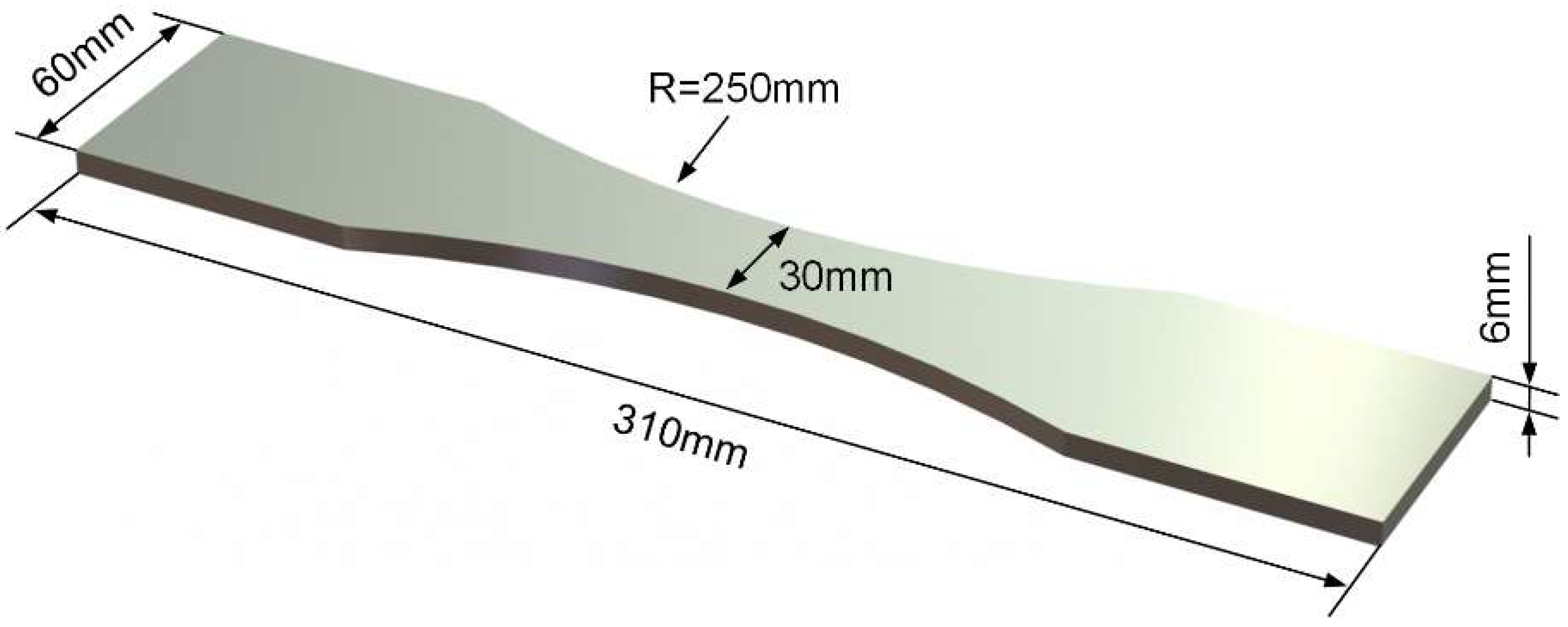
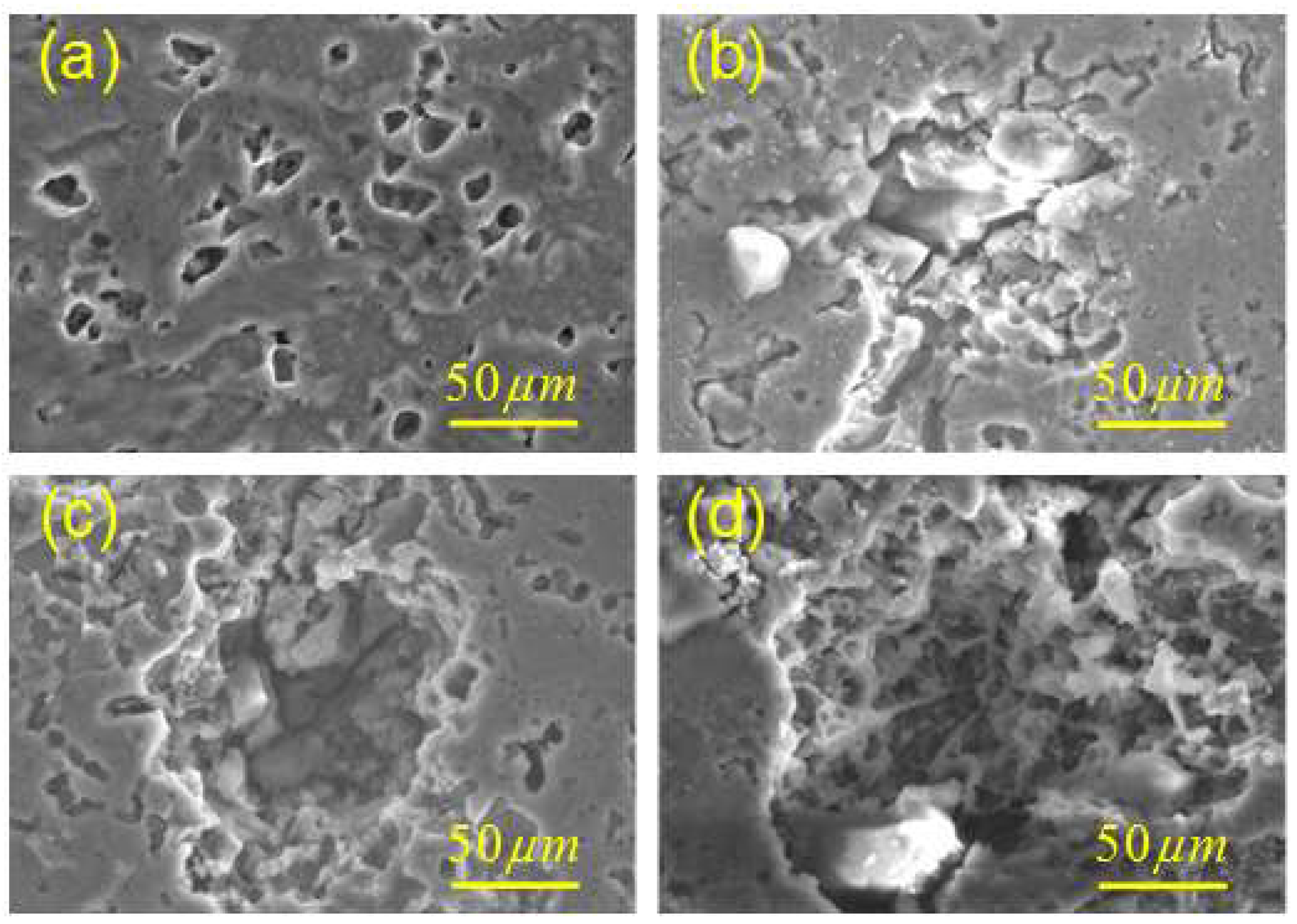
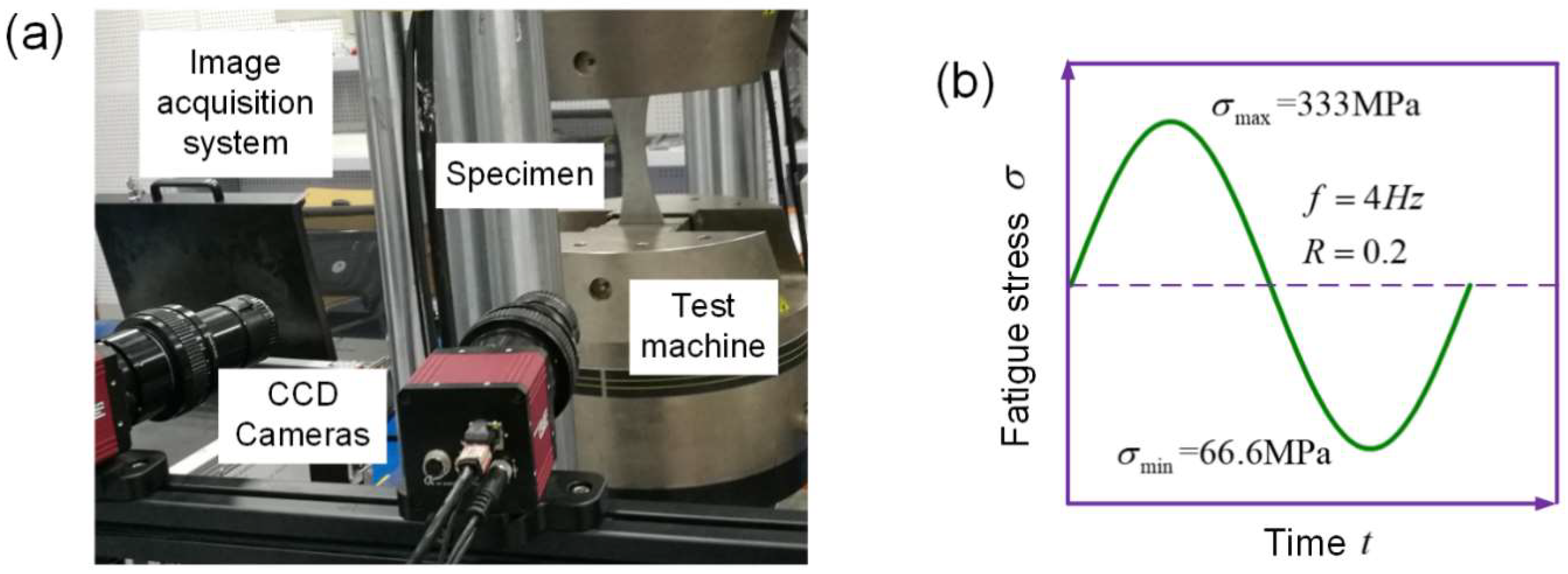

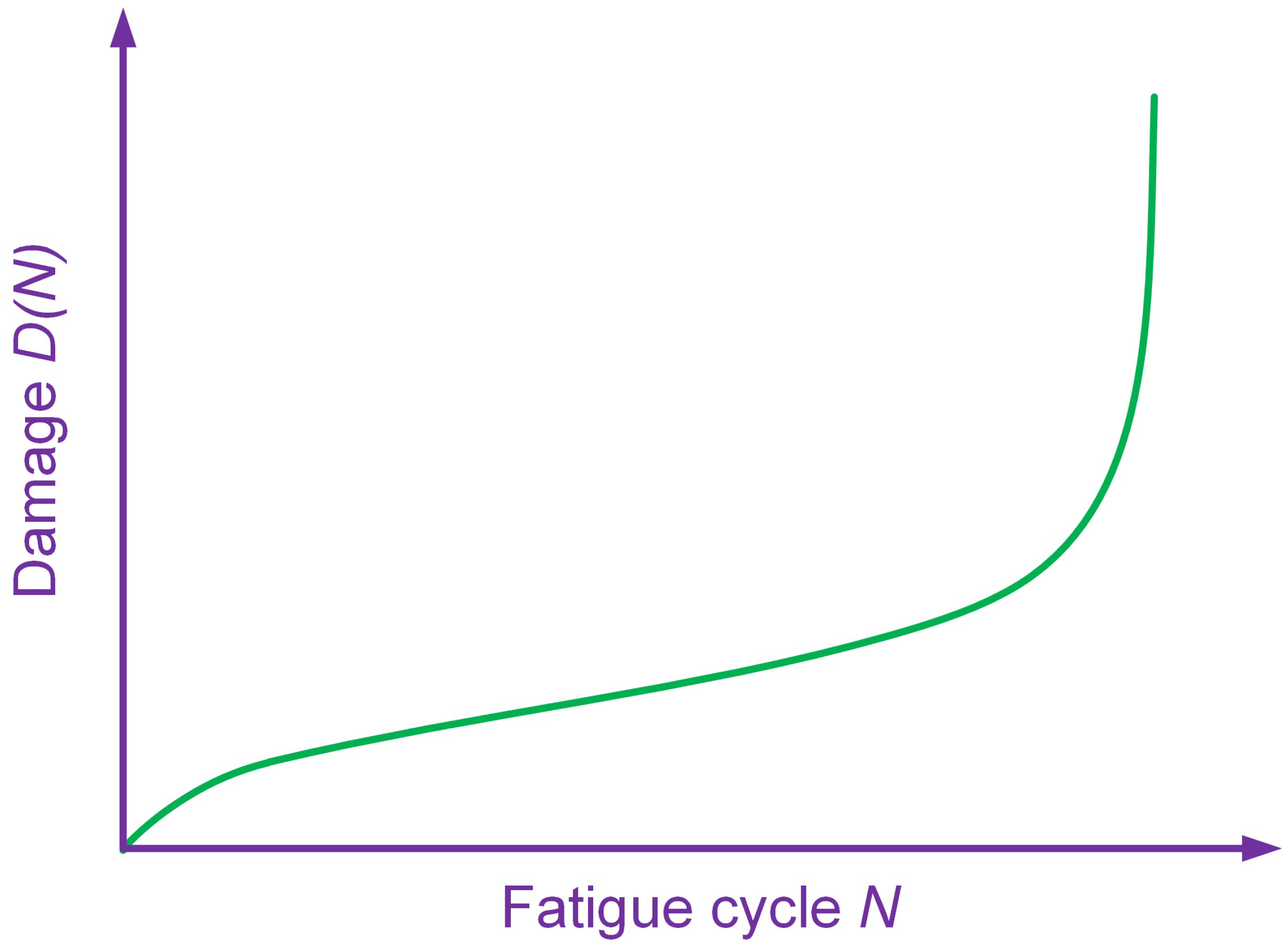
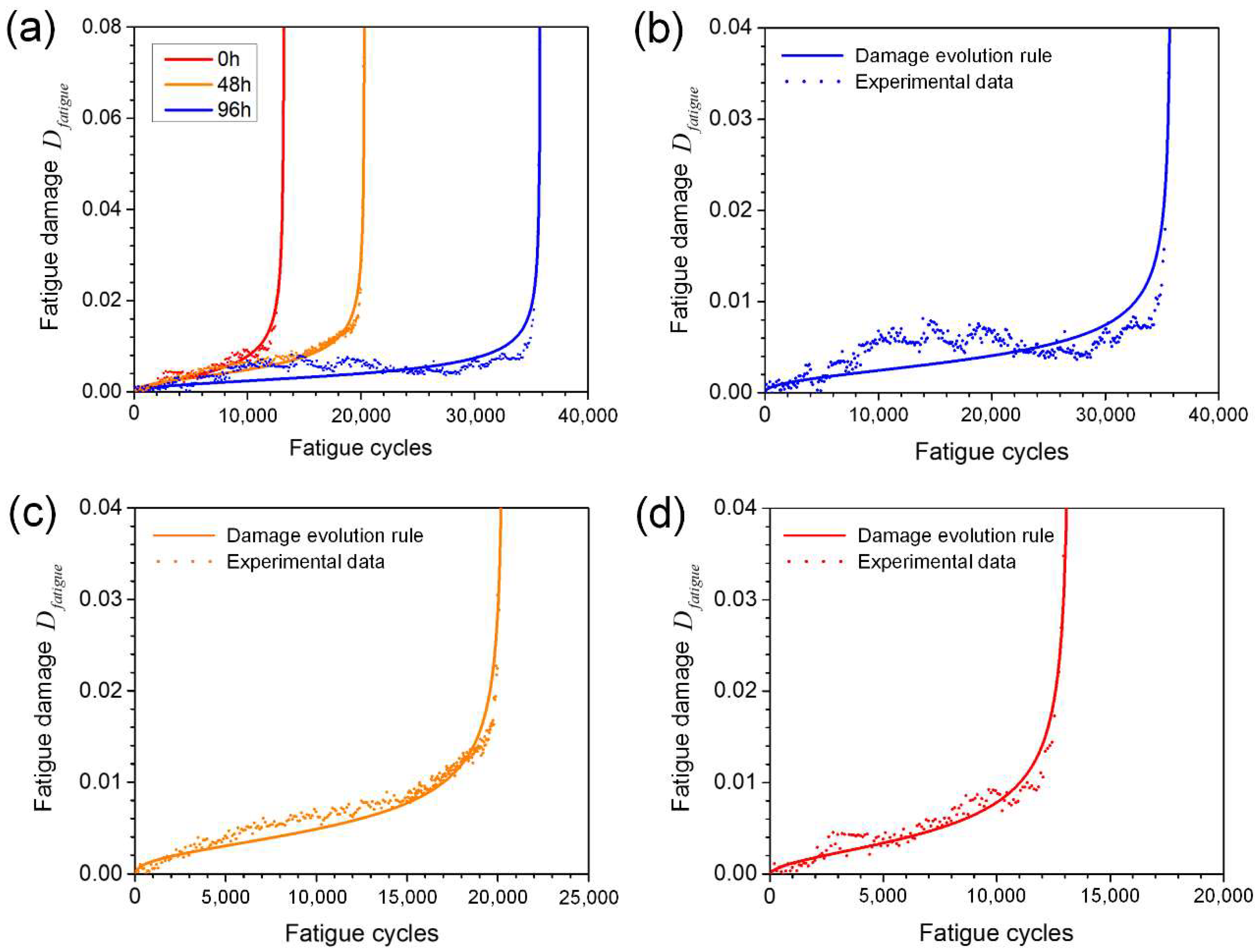
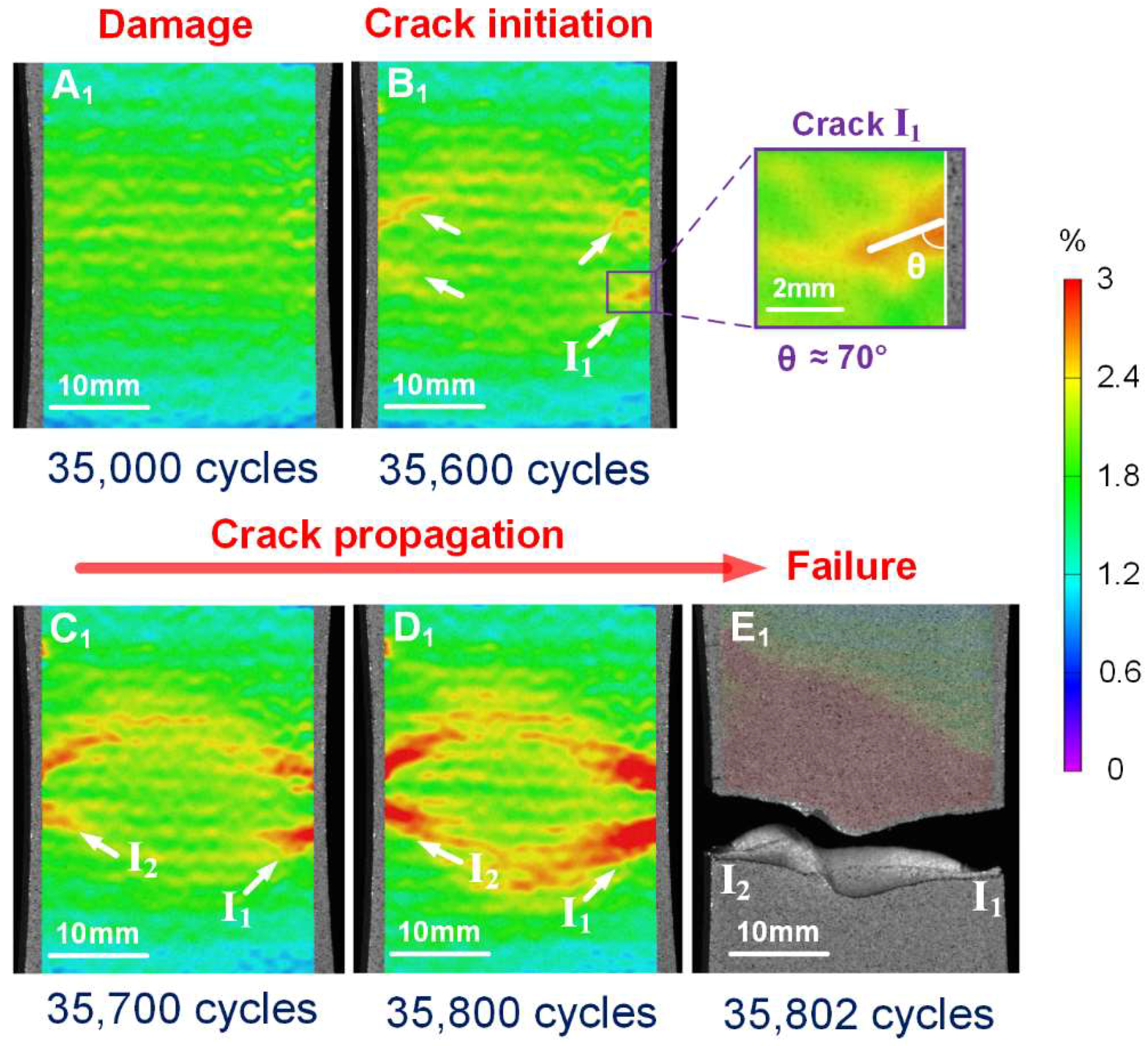

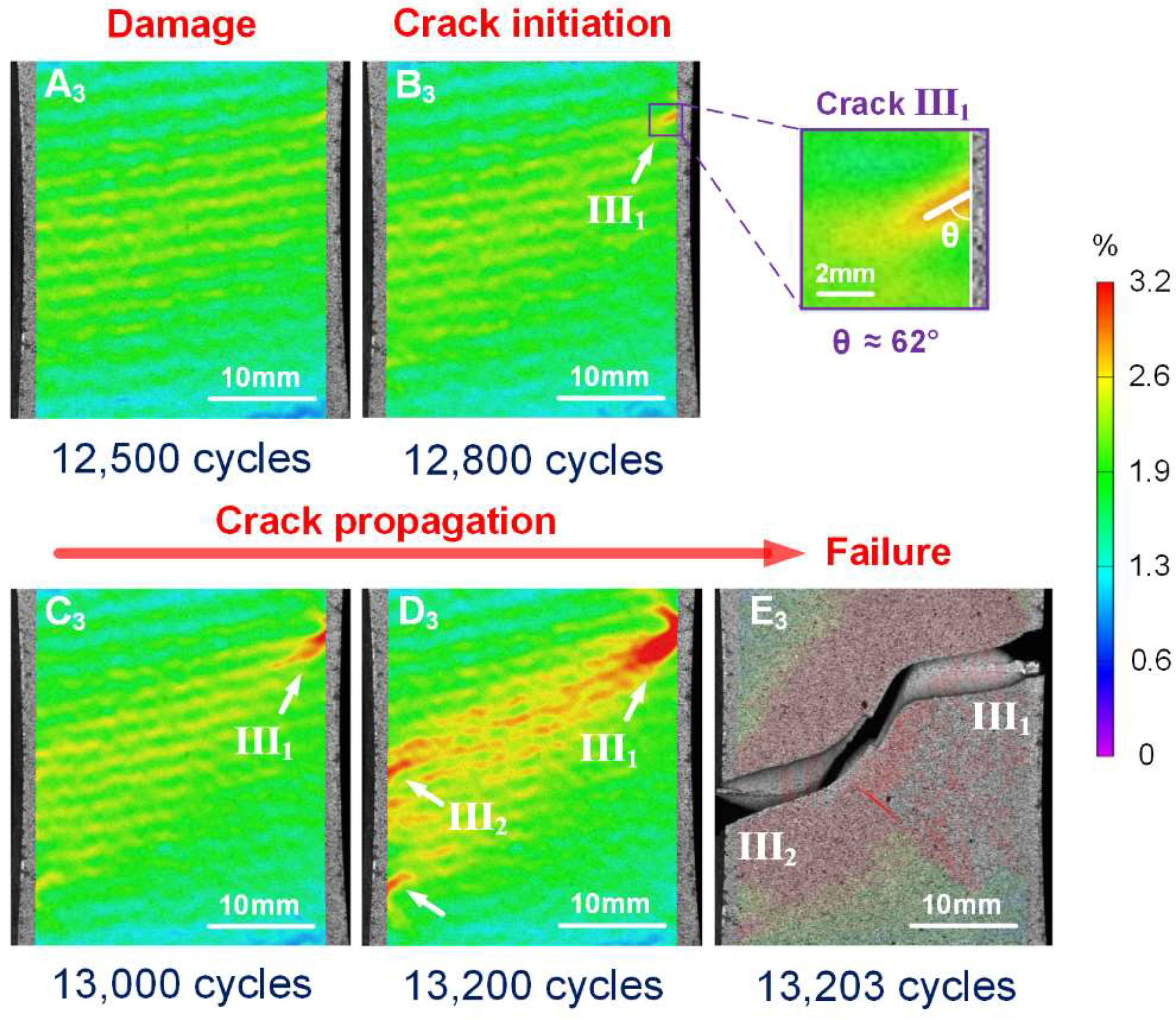



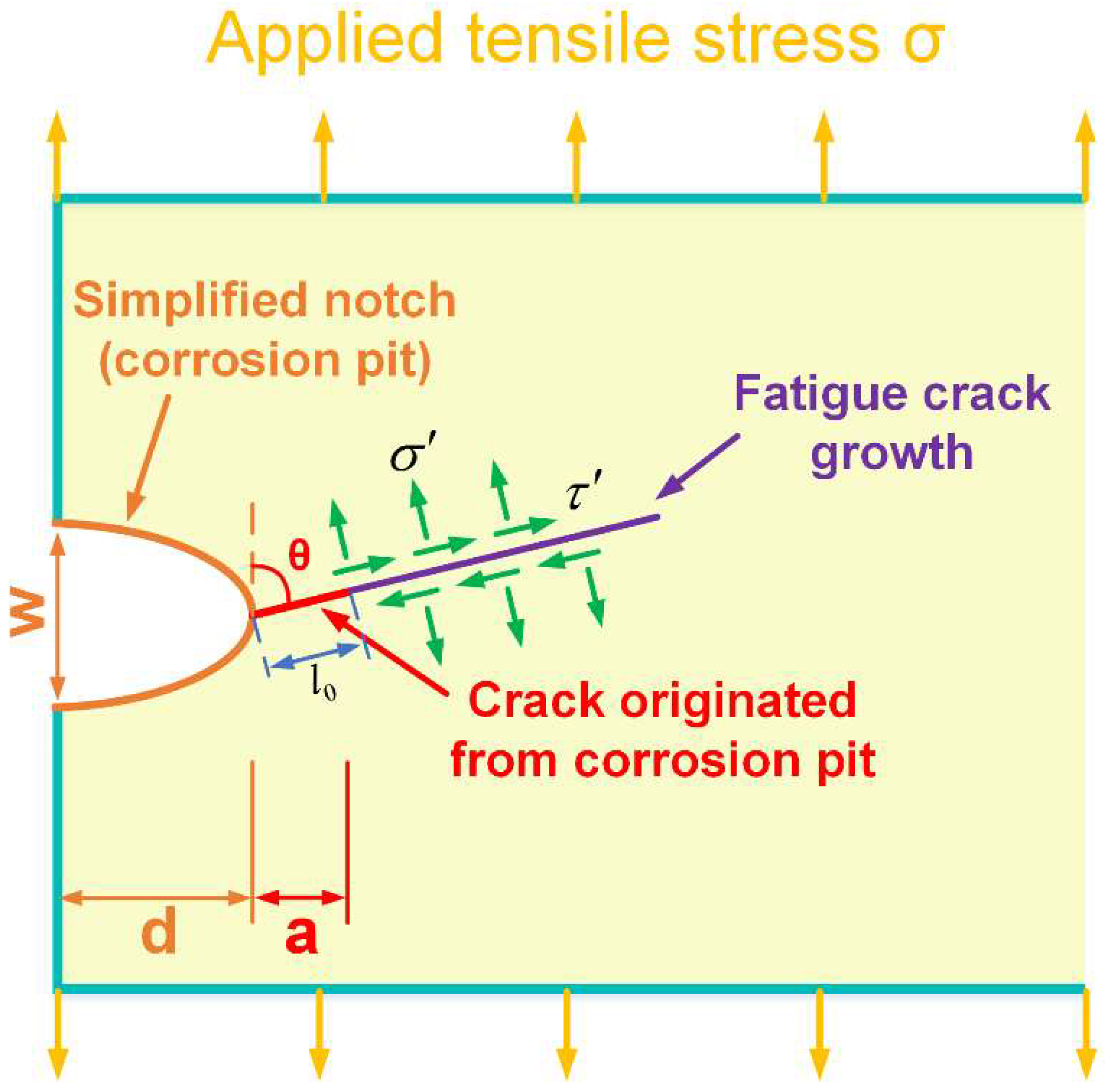

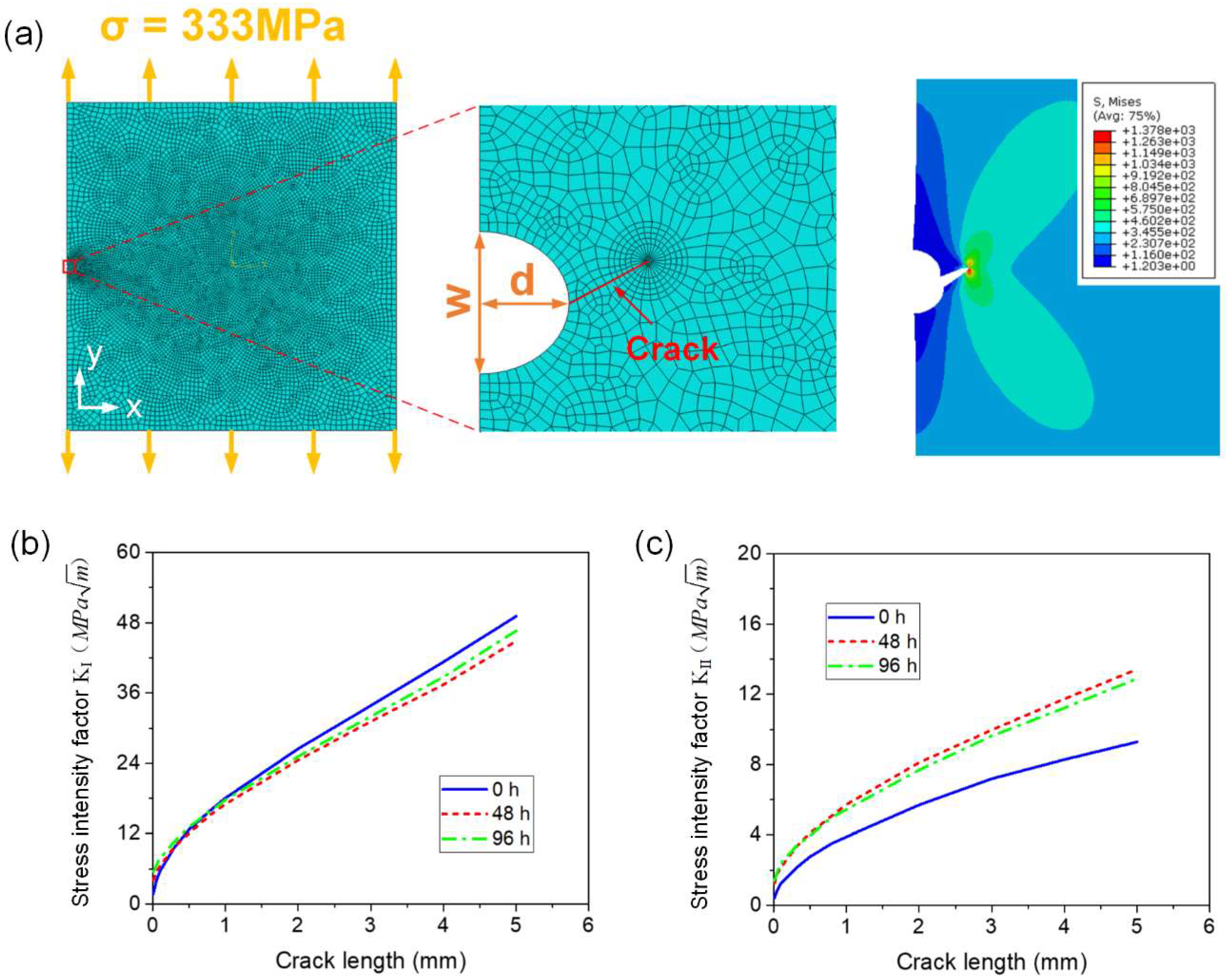
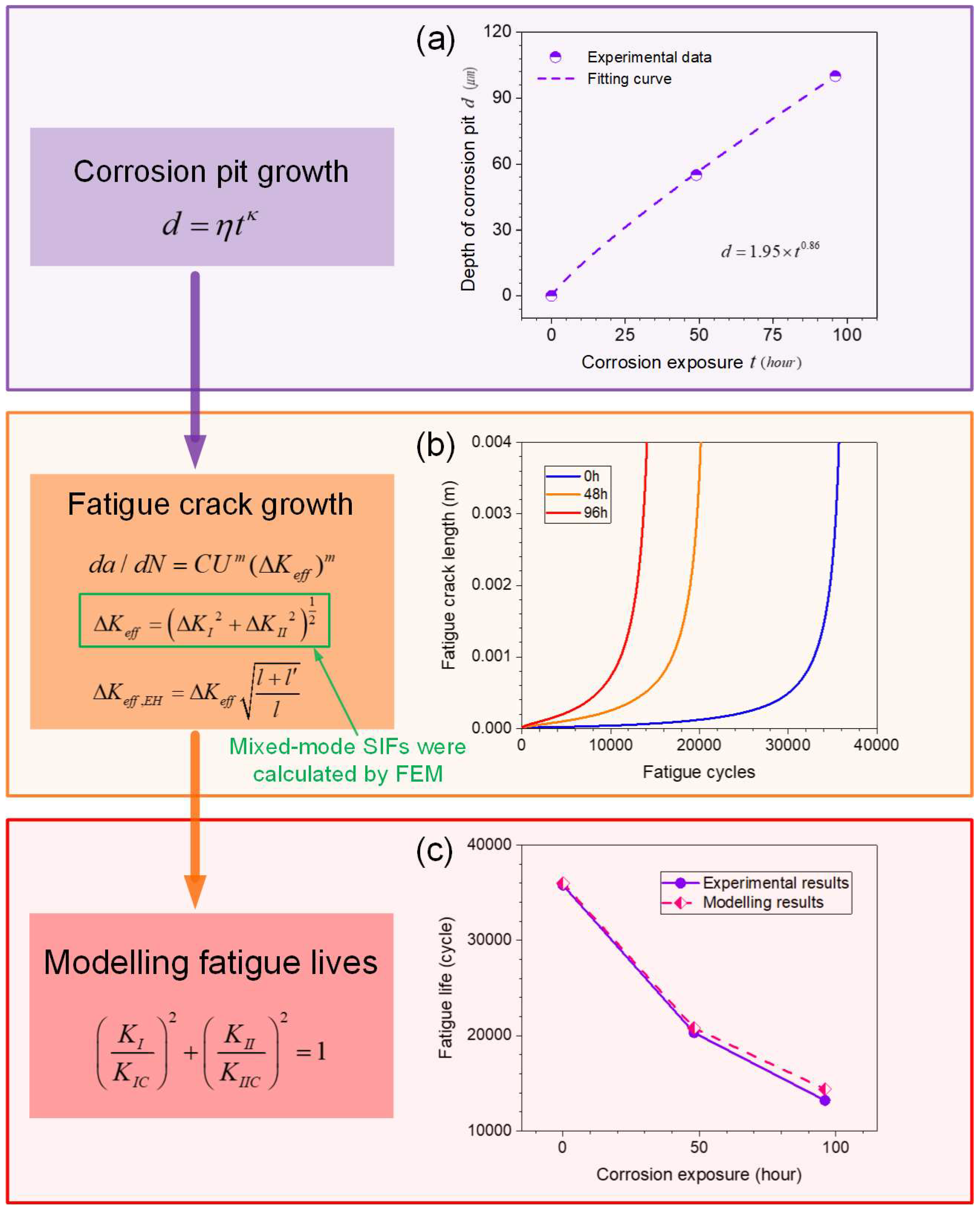
| Corrosion Exposure T(h) | α | β | p |
|---|---|---|---|
| 0 | 0.004 | 1.000 | 2.325 |
| 48 | 0.005 | 1.001 | 2.328 |
| 96 | 0.004 | 1.003 | 1.943 |
© 2018 by the authors. Licensee MDPI, Basel, Switzerland. This article is an open access article distributed under the terms and conditions of the Creative Commons Attribution (CC BY) license (http://creativecommons.org/licenses/by/4.0/).
Share and Cite
Song, H.; Liu, C.; Zhang, H.; Leen, S.B. A DIC-Based Study on Fatigue Damage Evolution in Pre-Corroded Aluminum Alloy 2024-T4. Materials 2018, 11, 2243. https://doi.org/10.3390/ma11112243
Song H, Liu C, Zhang H, Leen SB. A DIC-Based Study on Fatigue Damage Evolution in Pre-Corroded Aluminum Alloy 2024-T4. Materials. 2018; 11(11):2243. https://doi.org/10.3390/ma11112243
Chicago/Turabian StyleSong, Haipeng, Changchun Liu, Hao Zhang, and Sean B. Leen. 2018. "A DIC-Based Study on Fatigue Damage Evolution in Pre-Corroded Aluminum Alloy 2024-T4" Materials 11, no. 11: 2243. https://doi.org/10.3390/ma11112243
APA StyleSong, H., Liu, C., Zhang, H., & Leen, S. B. (2018). A DIC-Based Study on Fatigue Damage Evolution in Pre-Corroded Aluminum Alloy 2024-T4. Materials, 11(11), 2243. https://doi.org/10.3390/ma11112243





